Intarsia worked flat
Recognising how a fabric was made
Have you seen a fabric that you like? You can use your skills in reading your knitting to help you work out how to reproduce it.
Continue reading “Recognising how a fabric was made”It’s more than your eyes
Reading your knitting involves more than your eyes. Touch is a very useful sense that lets you know when things might be going wrong as you are making the stitches.
Continue reading “It’s more than your eyes”Finding problems
We all make mistakes. Counting and looking for differences between areas of your fabric (especially between repeats) are key tools to help you find any mistakes early.
Continue reading “Finding problems”Continue in pattern
Many patterns ask you to “continue in pattern” in an area that contains increases or decreases. Reading your knitting lets you know where in the “pattern” you are keeping to start and finish.
Continue reading “Continue in pattern”Matching what you see to the pattern
Most people follow a pattern when they are knitting. Knowing how to match the instructions in the pattern to what you see as the fabric is formed on your needles is central to reading your knitting.
Continue reading “Matching what you see to the pattern”Stitch markers
Private side
Also known as: wrong side, inside, back.
The side of knitted fabric that is not intended to be seen. Some fabrics may be folded (such as a collar on a sweater), in which case the “private side” is the one that is leastvisible. Other fabrics may be designed to have both sides equally visible, such as a reversible scarf, in which case the designer is likely to have defined a term that makes it possible to distinguish between the two sides.
Public side
Also known as: right side, outside, front.
The side of knitted fabric that is intended to be seen. Some fabrics may be folded (such as a collar on a sweater), in which case the “public side” is the one that is most visible. Other fabrics may be designed to have both sides equally visible, such as a reversible scarf, in which case the designer is likely to have defined a term that makes it possible to distinguish between the two sides.


